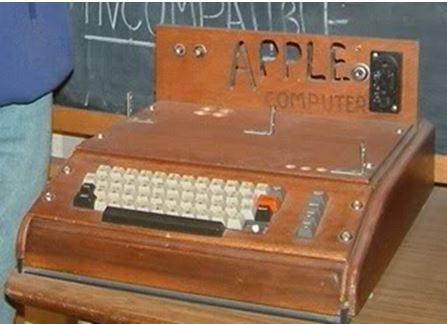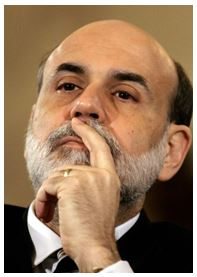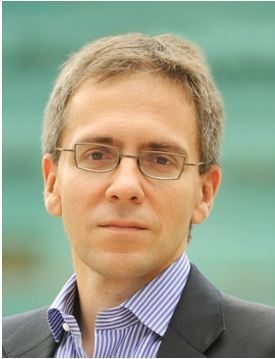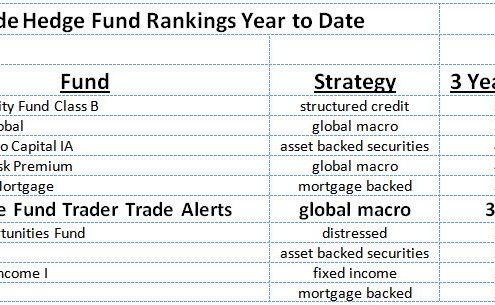
The first thing I do when I get up every morning is to curse the oil companies as the blood sucking scourges of modern civilization. I then fall down on my knees and thank God that we have oil companies.
This is why petroleum engineers are getting $100,000 straight out of college, while English and political science major are going straight on to food stamps.
I recommend (XOM) and other oil majors as part of any long-term portfolio. In my lifetime, the price of oil has gone up from $3 a barrel up to $149. The reasons for the ascent keep growing, from the entry of China into the global trading system, to the rapid growth of the middle class in emerging nations. They?re just not making the stuff anymore, and we can?t wait around for more dinosaurs to get squashed.
Oil companies aren?t in the oil speculation business. As soon as a new supply comes on stream, they hedge off their risk through the futures markets or through long-term supply contracts. You can find the prices they hedge at in the back of any annual report.
When oil made its big run a few years ago, I discovered to my amazement that that (XOM) had already sold most of their supplies in the $20 range. However, oil companies do make huge killings on what is already in the pipeline.
Working in the oil patch a decade ago pioneering the ?fracking? process for natural gas, I got to know many people in the industry. I found them to be insular, God fearing people not afraid of hard work. Perhaps this is because the black gold they are pursuing can blow up and kill them at any time. They are also great with numbers, which is why the oil majors are the best-managed companies in the world.
They are also huge gamblers. I swallow hard when I see the way these guys through around billions in capital, keeping in mind past disasters, like Dome Petroleum, the Alaskan oil spill, Piper Alpha, and more recently, the ill-fated Macondo well in the Gulf of Mexico. But one failure does not slow them down an iota. The ?wildcatting? origins made this a faith-based industry from day one, when praying was the principal determinant of where wells were sunk.
Unfortunately, the oil companies are too good at their job of supplying us with a steady and reliable source of energy. They have one of the oldest and most powerful lobbies in Washington, and as a result, the tax code is riddled with favorite treatment of the oil industry. While Social Security and Medicare are on the chopping block, the industry basks in the glow of $53 billion a year in tax subsidies.
When I first got into the oil business and sat down with a Houston CPA, the tax breaks were so legion that I couldn?t understand why anyone was not in the oil racket. Every wonder why we have had three presidents from Texas over the last 50 years, and are possibly looking at a fourth (Jeb Bush)?
Three words explain it all: the oil depletion allowance, whereby investors can write off the entire cost of a new well in the first year, while the income is spread over the life of the well. This also explains why deep-water exploration in the Gulf is far less regulated than California hairdressers.
No surprise then that that the industry has emerged in the cross hairs of the debt ceiling negotiations, under the ?loopholes? category. Not only do the country?s most profitable companies pay almost nothing in taxes, they are one of the largest users of private jets.
It is an old Washington nostrum that when things start heading south on the domestic front, you beat up the oil companies. It?s the industry that everyone loves to hate. Cut off the gasoline supply to an environmentalist, and he will be the one who screams the loudest. This has generated recurring cycles of accusatory congressional investigations, windfall profits taxes, and punitive regulations, the most recent flavor we are now seeing.
But imagine what the world would look like if Exxon and its cohorts were German, Saudi, or heaven forbid, Chinese. I bet we wouldn?t have as much oil as we do today, and it wouldn?t be as cheap. Hate them if you will, but at least these are our oil companies. Try jamming a lump of coal into the gas tank of your Prius and tell me what happens.
Love Them, Hate Them or Both?
Say you owned 10% of Apple (AAPL) and you sold it for $800 in 1976. What would that stake be worth today?
Try $22 billion. That is the harsh reality that Ron Wayne, 76, faces every morning when he wakes up, one of the three original founders of the consumer electronics giant. Ron first met Steve Jobs when he was a spritely 21-year-old marketing guy at Atari, the inventor of the hugely successful ?Pong? video arcade game.
Ron dumped his shares when he became convinced that Steve Jobs? reckless spending was going to drive the nascent start up into the ground, and he wanted to protect his assets in a future bankruptcy. Co-founders Jobs and Steve Wozniak each kept their original 45% ownership. Today Job?s window?s 0.5% ownership is worth $1.5 billion, while the Woz?s share remains undisclosed. Ron designed the company?s original logo and wrote the manual for the Apple 1 computer, which boasted all of 8,000 bytes of RAM (which is 0.008 megabytes to you non-techies).
Today, Ron is living off of a meager monthly Social Security check in remote Pahrump, Nevada, about as far out in the middle of nowhere you can get, where he can occasionally be seen playing the penny slots.
Global Market Comments
June 20, 2013
Fiat Lux
Featured Trade:
(JULY 25 PORTOFINO, ITALY STRATEGY LUNCHEON),
(MORE OF THE SAME FROM UNCLE BEN),
(SPY), (FXY), (YCS), (GLD), (TLT), (TBT),
(THE NEW COLD WAR)
SPDR S&P 500 (SPY)
CurrencyShares Japanese Yen Trust (FXY)
ProShares UltraShort Yen (YCS)
SPDR Gold Shares (GLD)
iShares Barclays 20+ Year Treas Bond (TLT)
ProShares UltraShort 20+ Year Treasury (TBT)
You may have noticed that our website has been down for the past day. We are undertaking a major upgrade to our infrastructure, and I thought completing this while you are all on vacation would be timely.
This means that our store is down as well, so you may need to wait until the weekend to renew your subscription, or buy tickets to my upcoming strategy luncheons. Just to be safe, we are delaying the launch of the Mad Day Trader by a week to July 1.
Thank you for your patience
John Thomas
The Mad Hedge Fund Trader
Come join John Thomas for lunch at the Mad Hedge Fund Trader's Global Strategy Update, which I will be conducting near Portofino, Italy on the Italian Riviera, on Thursday, July 25, 2013. A three-course lunch will be followed by a PowerPoint presentation and an extended question and answer period.
I'll be giving you my up to date view on stocks, bonds, foreign currencies, commodities, precious metals, and real estate. And to keep you in suspense, I'll be throwing a few surprises out there too. Enough charts, tables, graphs, and statistics will be thrown at you to keep your ears ringing for a week. Tickets are available for $205.
The lunch will be held at major hotel on the beach in the village of Santa Margherita Ligure, the details of which will be emailed with your purchase confirmation. The town is easily accessible by train from Genoa, and the hotel is about a ten-minute walk from the train station.
Bring your broad brimmed hat, sunglasses, and suntan lotion. You will need them. The dress is casual. Accompanying spouses will be free to use the beach below and bill drinks to the luncheon. Together we will plot the future of western civilization.
I look forward to meeting you, and thank you for supporting my research. To purchase tickets for the luncheons, please go to my online store.
Ben Bernanke delivered exactly what I expected today, continuing his massively simulative monetary policy as is. The taper went missing in action, and search parties have been already sent out by the bears.
In the past this move would have triggered a massive move up in risk assets, and a collapse of the bond market, but not this time. Bernanke's news is not exactly new, and leaving things unchanged doesn't exactly prompt frenetic bouts of volatility. We are also in the summer doldrums, with much of the market liquidity now competing in company golf tournaments, gorging at clambakes, or topping up tans at the beach.
What this sets up is a rather dreary season of trading inside narrow ranges. The S&P 500 (SPY) will bounce along like a ping pong ball between 1,580 and $1,680, the ten year Treasury bond (TLT), (TBT) within 1.90%-2.40%, the yen (FXY), (YCS) inside ?98-?104, and gold (GLD) trapped inside $1,250-$1,480.
You can trade outside of these ranges with alternating call and put spreads and take in some modest returns. Or you can conclude that the risk/reward is mediocre at best, and join you friends on vacation. You don't fool me. When I send out my newsletter these days, those "Out of Office" messages are breaking out like sunburns at Coney Island, Navy Pier, and the Santa Cruz Boardwalk.
I think the markets are reserving their real fireworks for us in the coming fall. If the Federal Reserve's economic forecast is correct, we are headed towards a 2015 GDP growth rate of 2.9%-3.6%, an unemployment rate of 5.2%, and an inflation rate on only 1.6%-2.0%. That is a best case, "golden age" type scenario for the financial markets which leaves the Great Recession well in the dust of the rear view mirror.
The "Big Tell" here is the Fed's inflationary expectations rate. They are close to nil. The august government agency thinks that even a return to the long term average US economic growth rate above 3% won't ignite a wildfire of price hikes. That greenlights a continued pedal to the metal on monetary stimulus, and highlights the unemployment rate as the top priority.
These predictions would give us the launching pad for risk assets to commence a nice yearend rally. That would take the S&P 500 to $1,750, bond yield to $2.50%, the yen to ?110, and gold down to $1,100, much to the chagrin of gold bugs everywhere.
What was the biggest move today? My short position in the Japanese yen, which plunged a full 2% as Bernanke spoke. Sometimes fairy tales come true after all.
My friend, Ian Bremmer of the Eurasia Group, a global risk analyst who I regularly follow, has published an outstanding book entitled The End of the Free Markets: Who Wins the War Between States and Corporations. I find this highly depressing, as it takes me as long to read one of Ian's books as it takes him to write another one. To read a review of his highly insightful tome published in 2008, The Fat Tail: The Power of Political Knowledge for Strategic Investing, please click here. The world is reaching a tipping point. For the past 40 years, global multinationals with unfettered access to capital, consumer, and labor markets have driven the world economy. There is now a new competitor on the scene, the "state capitalist," where political considerations trump economic ones in the allocation of resources. Of course, China is the main player, joined by several other emerging nations. The Middle Kingdom has posted double-digit annual growth for the past 30 years without freedom of speech, economic rules of the road, and independent judiciary, and credible property rights. China's leadership is clearly worried that Western style freedoms will enable wealth to be generated outside their control and be used to orchestrate their overthrow. Private Western companies can only engage in transactions, which stand on their own economically and deliver the short-term profits, which their shareholders demand. In China, long-term political goals enable them to pay through the nose to obtain stable supplies of oil, gas, minerals, and materials. That keeps the country's massive work force employed, off the streets, and politically neutered. The bottom line is that there are now two competing forms of capitalism. The recent financial crisis has accelerated their entrance to the global stage, moving us from a G7 to a G20 dominated world. Globalization is not ending, but it is definitely entering a new chapter. For those of us who read tealeaves to ascertain major, market moving economic trends, this will be a must read. To buy the book at Amazon, please click here. 

Global Market Comments
June 19, 2013
Fiat Lux
Featured Trade:
(JULY 8 LONDON STRATEGY LUNCHEON),
(TRADE ALERT SERVICE RANKS SIXTH AMONG HEDGE FUNDS)
(THE HISTORY OF TECHNOLOGY),
(THE FUTURE OF CONSUMER SPENDING),
(EEM), (PIN), (IDX), (EWC)
iShares MSCI Emerging Markets Index (EEM)
PowerShares India (PIN)
Market Vectors Indonesia Index ETF (IDX)
iShares MSCI Canada Index (EWC)
Come join me for lunch for the Mad Hedge Fund Trader's Global Strategy Update, which I will be conducting in London on Monday, July 8, 2013. A three-course lunch will be followed by a PowerPoint presentation and an extended question and answer period.
I'll be giving you my up to date view on stocks, bonds, currencies commodities, precious metals, and real estate. And to keep you in suspense, I'll be throwing a few surprises out there too. Enough charts, tables, graphs, and statistics will be thrown at you to keep your ears ringing for a week. Tickets are available for $249.
I'll be arriving an hour early and leaving late in case anyone wants to have a one on one discussion, or just sit around and chew the fat about the financial markets.
The lunch will be held at a private club on St. James Street, the details of which will be emailed to you with your purchase confirmation.
I look forward to meeting you, and thank you for supporting my research. To purchase tickets for the luncheons, please go to my online store.
The Trade Alert service of the Mad Hedge Fund Trader ranked as the sixth top-performing hedge fund in the world, according to statistics compiled by Barron's. The Dow Jones subsidiary tallied results of the top 100 funds from a potential global universe of over 10,000. It then ranked results according to their three-year compound annual returns.
The Red Bank, New Jersey based Zais Opportunity Fund Class B came in at number one, with an eye popping 52.39% return? (https://www.zaisgroup.com/about.aspx ). They were followed by Quantedge Global in New York (http://www.quantedge.com/about/overview.php).
I peruse the list when it comes out every quarter to see how my friends in the industry are doing, and to study which strategies are delivering the winning numbers. No surprise that bond managers dominated the ranks, as we are just winding up a 60-year bull market in that once sought after asset class. However, investors in the four funds that employed bond strategies are about to get a rude wake up call, as May was the worst month in that market in many years.
Funds that employed a global macro approach, as I do, were catapulted to the top by correctly betting on Japan. This has been one of the toughest strategies to execute in recent years, as the massive liquidity provided by the Federal Reserve so grievously separates international assets from their fundamentals. Many such funds have been getting killed by their short positions in equities this year. Two funds in the Barron's table executed specialized niche strategies in asset-backed strategies, while one focused on distressed securities.
As of last week, the Trade Alert Service of the Mad Hedge Fund Trader boasted an enviable averaged annualized return of 35.50%. My own biggest earnings of the year have been in short yen, short gold, and long US equities. Followers have been laughing all the way to the bank (click here for the link to the testimonials).
Global Trading Dispatch, my highly innovative and successful trade-mentoring program, earned a net return for readers of 40.17% in 2011 and 14.87% in 2012. The service includes my Trade Alert Service, daily newsletter, real-time trading portfolio, an enormous trading idea database, and live biweekly strategy webinars. To subscribe, please go to my website at http://madhedgefundradio.com, find the "Global Trading Dispatch" box on the right, and click on the lime green "SUBSCRIBE NOW" button.
























